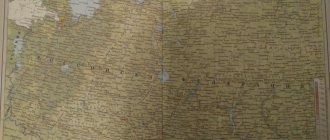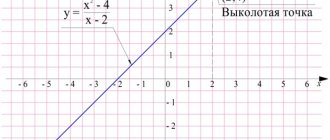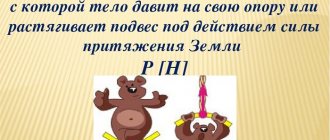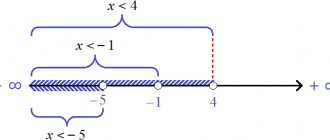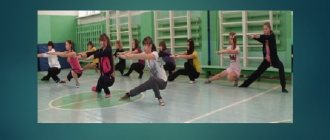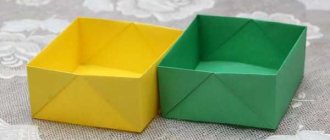Development of a lesson for 6th grade on the subject “Technology” on the topic “Machine seams”
Chapter:
"Mechanical Science"
Lesson topic:
"Types of machine seams"
Target:
become familiar with the types of machine seams, characterize each seam and develop skills in making machine seams, observing technological sequence and safety precautions.
Lesson objectives:
Educational:
generalization and systematization of knowledge, skills and abilities acquired by students while studying types of machine seams.
Developmental
: development of skills in making machine seams, the ability to plan your work, adjust and evaluate your work, applying the knowledge and skills acquired in technology lessons; development of logical thinking.
Educational:
fostering hard work, attentiveness, and a sense of responsibility; formation of aesthetic taste, respectful attitude towards work, work culture skills, accuracy.
Methods and pedagogical techniques used in the lesson
: modeling, problem method, frontal work.
Lesson type
:
combined
– explanation of new material and consolidation of acquired knowledge, skills and abilities.
Lesson duration:
2 lessons of 45 minutes.
Equipment:
textbook, workbook, sewing machine, posters, samples of seams, pieces of cotton fabric, set of hand tools, ruler, cotton thread.
A computer is used in the lesson (presentation)
During the classes
1. Organizational moment
- greeting students;
- checking readiness for the lesson.
2. Repetition of previously studied material
At the beginning of the lesson, during a survey in the form of a test, the basic knowledge of students on the topics “Materials Science” and “Equipment” is repeated.
3. Communicate the topic and objectives of the lesson
The topic of the lesson is “Types of machine seams.” In previous lessons, we studied the types of hand stitches and the rules for threading the upper and lower threads of a sewing machine.
Students write down the date and topic of the lesson in their workbook.
4. Explanation of new material
The joining of parts, processing of cuts and finishing of products is carried out using various seams made on a sewing machine. A seam is a place where two or more parts are joined using a stitch. Each of the machine seams has its own purpose and specific dimensions.
Machine seams can be CONNECTING, EDGE and FINISHING. They serve, respectively, for connecting parts of clothing, for processing edges and decorating (finishing) products. The choice of seam also depends on the type of fabric, purpose of the product and other reasons.
The seam
– a place where two or more parts are joined by a stitch.
Seam width
- this is the distance from the stitch to the cut of the part.
CONNECTING SEAMS
Stitch seam
used to connect all the main parts of the product. The parts are folded with their right sides inward, aligning the cuts, and joined by stitching on a machine at a distance from the edge, depending on the purpose of the seam. Stitching is performed from the side of parts that have concave cuts, cut corners, gathers, etc.
Pressed stitch seam
used for connecting individual parts of outerwear, linings, and linen products. This seam can be used for repairing garments. Sections of easily frayed fabrics are overcast or trimmed with zigzag scissors.
Pressed seam
used for joining parts of outerwear made of thick fabric (trousers, jackets, coats, etc.), for repairing garments. Seam width:
a) stitching of extensions of collars, lower collars made of non-fraying fabrics - 5 mm;
b) the same from easily fraying fabrics - 7 mm;
c) connection of the main parts of the top and lining - 10 mm;
d) connection of the main parts of a women's light dress - 12-15 mm.
Topstitch stitch
used for joining parts in products made from fabrics that are difficult to handle or do not allow moisture-heat treatment (rubberized fabrics and film-coated fabrics), as well as for joining and finishing parts of the front and back of individual models of women's clothing.
When making a topstitch, pay attention to the parallelism and symmetry of the topstitch lines, and also to ensure that the seam allowances are secured with a topstitch line along the entire length.
Adjustment stitch
used for joining parts, mainly made of thick fabrics, as well as for finishing shoulder, side and elbow seams, for sewing yokes and other parts along various shaped lines. Also, adjustment seams are used to increase the strength of the seam, to secure the seam allowance in materials that are difficult to handle or do not allow moisture-heat treatment, as well as for finishing.
When making a seam, the parts are folded with their right sides and, having aligned the cuts, they are connected with a stitch seam parallel to the cuts. Then the top part is folded to the side, the seam allowances are ironed on the wrong side, and a second line is laid along the front side, holding together the three layers of material. On dense fabrics, the cut of the lower edge is made 0.5 cm narrower so that the seam is narrower.
Adjustment stitch with flared edge
used when processing products made from light materials. To perform it, the seam allowance is first folded to the wrong side, ironed and applied to the part intended for joining. Then the parts are basted and stitched with one line at the selected distance.
Adjustment stitch with open edges
connect parts of the front, back, hood in a storm jacket, collar or hood with neck, flounces with a dress and nightgown.
When making an adjustment seam, pay attention to the evenness of the stitching line, the quality of the wet-heat treatment and the parallelism of the stitching line to the fold line.
Adjustment stitch with one closed cut
used for joining parts of coats made of woolen fabrics, for sewing the hood into the neck, i.e. in cases where it is necessary to reduce the thickness of the seam.
Overlay seams
are performed in one line and do not require wet-heat treatment.
Overlay seam with open edges
used for connecting gaskets that are closed in the product with a lining, for connecting non-woven materials.
When sewing finishing braid with an overlay seam, pay attention to the evenness and quality of the stitching, and the symmetry of the placement of the stitches. The stitching line should be placed at a distance of 1-2 mm from the edge of the braid.
A patch stitch with a closed cut is used instead of a stitching stitch when the seam has a complex shape: for sewing patch pockets, the folded edge of facings, the upper part of cuffs on sleeves, the upper collar on the neck, the seam allowance on a zipper fastener. This seam can be used for repairing garments.
Overlay seam with two closed cuts
used for processing robe belts, trouser loops or skirts. Also, an overlay stitch with closed cuts is used to sew on a strip of fabric (drawstring) for elastic braid.
When sewing a drawstring with an overlay seam with closed cuts, you should pay attention to the uniformity of the fabric hem, the symmetry and parallelism of the stitching lines, the distance between which should ensure the free placement of the elastic braid.
Butt seam
, connecting parts using a strip of fabric or braid, is used for finishing skirts, aprons, and sportswear.
A butt seam made with a zigzag stitch is used instead of an overlay seam with open cuts when sewing parts of the interlining parts in products with a top made of thin material.
When making a butt seam, the width of the zigzag stitch should be at least 4-5 mm to ensure that two parts are captured. In this case, the middle of the zigzag stitch should coincide with the joint of the parts.
Covering seam
used for the manufacture of underwear, sportswear, and unlined suits.
The two parts are folded with the right sides inward, releasing a cut of the lower part by 0.8 cm. Fold the larger cut over the smaller one and stitch at a distance of 0.2 cm from the cut. Then lay out the parts in different directions, bend the seam to the side, covering the trimmed edge, and lay a second line at a distance of 0.2 cm from the folded edge. The finished seam width is 0.6-0.8 cm.
The sewing seam is highly durable and securely secures the cuts. It is used in the manufacture of work robes, tunics, jackets, overalls, and sportswear.
The quality of the sewing seam largely depends on the evenness of the fabric cuts, on the wet-heat treatment after completing the first line, and on the parallelism between the lines.
Please note that the seam allowance on the bottom piece should be slightly larger than the seam allowance on the top piece.
EDGE JOINTS
Hem seam with open cut
(open cut hem) is used to protect the cut parts from fraying by folding them. A hem seam with an open cut is used to process the internal edges of hems, as well as the bottom of skirts, raincoats, aprons, trousers, and the upper edges of patch pockets with preliminary overcasting of the edge.
Closed hem seam
(hemming stitch with a closed cut) is used when hemming the bottom of various products, bed linen, etc. To perform it, the hem edge is folded inside out by 0.5 cm, then folded again by about 0.5-1 cm or more, depending on the properties of the fabric and the purpose of the product, and are attached at the very fold. This seam can be made using a special foot, which is installed instead of the usual one.
Hem
with a closed cut is used for processing cuts of parts made of easily fraying fabric in the manufacture of an apron, headscarf, bed linen, curtains, for processing the lower cut of sleeves, and the cut of a hood. The width of the inner hem is 3-10 mm, the outer hem is 4-40 mm.
Narrow hem seam or hem
used in the manufacture of flounces, frills and the bottom of skirts and dresses. To perform it, the trimmed edge of the fabric is folded to the wrong side by 0.3 cm, basted and stitched at a distance of 0.15-0.2 cm from the fold; Excess fabric is carefully cut off almost at the very seam. The stitched edge is folded again by 0.2-0.3 cm and fastened with a stitch, laying it next to the first one.
Edge stitch
used to design necklines, armholes, bottoms of skirts, etc. To make this seam, edging strips (facing) are required. Depending on the purpose of the seam and the shape of the cut, they can be lobar, transverse or regular oblique (cut at an angle of 45 degrees to the direction of the base). As a rule, the facing is cut out with the same thread direction as the part on which it is to be sewn. The facing is sewn so that its width is the same on the front and back sides.
There are various options for edging seams.
Edging seam with braid
used for the same purpose as a closed-cut seam, only braid is used instead of facing. To make this seam, the braid is basted to the part so that its width is the same on both sides of the fold. After this, a line is laid that captures both edges of the braid.
Open cut edge stitch
, performed using a strip of fabric cut at an angle of 45 degrees to the warp threads, is used to protect sections of parts from fraying in products without a lining or with a lining that does not reach the bottom, for processing the bottom of skirts, for finishing the edges of parts that will then be ground down with other details, for example, patch pockets, yokes, etc.
Edge stitch with closed edges
, obtained by connecting a strip of fabric folded in half to the main part, is used to process the edge of the collar, pockets, the bottom of the product and sleeves, neck sections and armholes. To perform it, a facing folded in half is used. The facing is folded in half with the wrong side inward, ironed and applied to the front side of the part, the cuts are aligned, basted and stitched. Then the facing is used to bend around the seam sections, baste and stitch on the right side at the very fold of the facing.
Overcast seam in piping
used for processing sections of valves, sides, collars, pockets and other parts.
In parts such as a collar, flap, etc., the piping is placed on the inside of the part so that the stitching seam on the front side of the part is not visible. When processing cuts, stitched loops, and welt pockets, the edging is located on the front side, filling the hole formed after turning out the part. When making a facing seam in an edging, pay attention to the uniformity of the edging and the parallelism of the stitching to the folded edge along the entire length of the edging.
Overlock stitch in frame
used for the manufacture of facing buttonholes in women's clothing, welt pockets with and without flaps, and finishing strips. The uniformity of the facing seam in the frame is achieved by combining the cuts of the edging strip and the main part, the evenness of the stitching line and the quality of the wet-heat treatment.
FINISHING SEAMS
Simple
and complex folds
are widely used for finishing women's dresses, skirts, sportswear robes, etc. When making folds, you should pay attention to the evenness of the stitching, the accuracy of the fastening and wet-heat treatment.
Raised seam with cord
used to obtain a relief line on an entire part, for example, on the back and sleeves of a dress or coat.
The main fabric or fabric of the same thickness as the main fabric is used as a lining strip.
This seam is made using a special single-horn foot to ensure that the fabric wraps tightly around the cord.
When performing machine seams, it is necessary to comply with the requirements for performing machine work, that is, technical requirements.
Requirements for performing machine work:
1. Before performing machine operations, check that there are no pins left in the parts of the product.
2. In products made from cotton and linen fabrics, cotton threads are used for machine stitching.
3. Thread and machine needle numbers must correspond to the thickness of the fabric.
4. All stitches are done with threads matching the color of the fabric. The trim (braid, lace, applique) is sewn on with threads matching the color of the trim.
5. When doing machine stitching, seam allowances are placed to the right of the needle, and the part of the product itself is to the left.
6. The machine stitch is laid exactly along the intended contour line.
7. At the beginning and at the end, the machine stitch is always secured (by reversing the sewing machine), the length of the bartacks is 7-10 mm.
8. The width of the seam (the distance from the cut of the part to the stitching) must correspond to the dimensions indicated in the technological maps.
9. When sewing, do not pull or push the fabric.
10. When sewing, do not keep your hands close to moving parts of the machine (especially the machine needle).
PHYSICAL ACTIVITY MINUTE
5. Safety briefing
1. Before starting work, put on an apron and tuck your hair under a scarf.
2. Do not pull the fabric while working to avoid needle breakage.
3. You cannot keep your fingers at the level of your paw to avoid puncturing your fingers.
4. Do not keep foreign objects on the machine's desktop.
5. The distance from the eyes to the machine foot should be 30-35 cm.
6. Upon completion of work, remove the workplace and clean and lubricate the machine.
6. Practical work
Students occupy work stations at sewing machines. Near each machine on the table there is an “Instruction Card” and instructions on safe work rules.
Consolidation of new material.
Questions:
1. The place where two or more parts are joined with a stitch ... (seam).
2. distance from the stitch to the cut of the parts... (seam width).
3. What threads are used for all internal machine stitches?
6. Summing up the lesson.
Conversation on questions:
- What new did you learn in the lesson?
— what did you learn to do?
Analysis of the lesson: students’ attitude to the types of activities in the lesson, activity, initiative of their participation, diligence, mistakes made, comments.
Reporting grades for theoretical knowledge and practical work (analysis of practical work performance).
7. Homework:
arrange samples of seams in an album and describe them;
learn basic concepts on the covered topic.
ANNEX 1
INSTRUCTION CARD
"Connection seams"
1. Fold two flaps (size 10x15 cm) with right sides inward.
2. Baste with straight running stitches, departing 1.5-2 cm from the cut.
3. Stitch on a sewing machine, departing 0.1 cm from the basting thread.
4. Remove the basting thread.
5. One piece of fabric - iron the seam, the other - iron it.
6. On the front side, add a finishing stitch of 0.5 cm.
APPENDIX 2
CONNECTING SEAMS
EDGE JOINTS
FINISHING SEAMS
